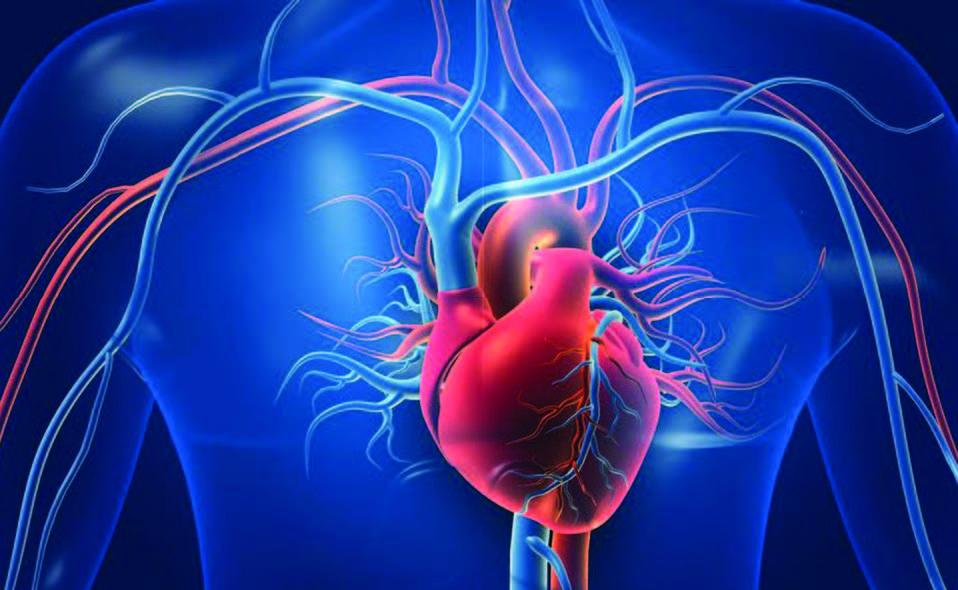 Coronary heart disease can occur when any of the three vessels to the heart become clogged up from cholesterol. This prevents the free flow of blood to the heart. One of the most dangerous aspects of heart disease is that people may not know they have the condition.
Coronary heart disease can occur when any of the three vessels to the heart become clogged up from cholesterol. This prevents the free flow of blood to the heart. One of the most dangerous aspects of heart disease is that people may not know they have the condition.Most people are familiar with coronary heart disease, CAD. Unfortunately, many of us have either experienced this or have friends or family, who have experienced this form of heart disease.
There are three main arteries that supply blood to the heart. Any of these three vessels may become clogged with cholesterol which prevents the free flow of blood to the heart. When this happens, the heart may experience periods where it does not receive the blood flow it needs. This can result in tissue or heart muscle loss which often leads to a heart attack. It can happen at a time when one is ambulatory (moving around), and more blood is needed to supply the heart muscle. If the blockage to the arteries is severe, blood flow to the heart is greatly reduced and the heart’s pumping ability is compromised.
When blockages happen to the arteries of the heart, such blockages can happen all over the body. That would include the brain and the extremities, especially in the lower legs and feet. This is called peripheral arterial disease is (PAD) and it can be very dangerous. There is considerable overlap between CAD and PAD where approximately 40 percent of people with CAD also have PAD.
Overlapping risk factors for PAD and CAD include health conditions such as diabetes, high blood pressure, high cholesterol, getting older, physical inactivity, obesity and smoking. Managing these risk factors and keeping them under control, plus smoking cessation (if you are a smoker), can improve your health. African Americans are at a higher risk for developing PAD than their White counterparts and experience a four-fold increase in foot and leg amputations due to PAD than Whites.
One of the most dangerous aspects of CAD and PAD is that people may not know they have either of these conditions. They may not recognize the symptoms or they may simply disregard them. For PAD, pain in the legs and feet when walking or at rest is a big sign. Noticing that you cannot walk as far as you used to be able to walk is also a sign. If you experience pain in your calf muscles upon walking, which is relieved once the walking is stopped, but comes back when walking is resumed – that is a sign of PAD. If you notice that the color of your feet have changed to be dark or blue, that is a sign of PAD. Realizing that you once had hair on your legs and now your legs are bare or even a marked difference in the health of your nails are signs of PAD. A big sign of PAD is whether injuries to your feet or legs take a long time to heal or do not completely heal.
Take the time to manage any of the risk factors mentioned above. Bathing is a great time to regularly examine your feet, legs and nails.
If these signs and symptoms are observed, discuss them with your healthcare provider. Do not wait. If your healthcare provider asks to see your feet, allow that to happen. Do not give excuses as to why you cannot take off your shoes. I assure healthcare providers have seen worse looking feet than yours and they will not judge you if they have not undergone a pedicure. In fact, examining bare nails provides clinicians with more information than polished ones.
COVID-19 has caused people to delay or not seek healthcare, which has contributed to an increase in the loss of legs and feet due to PAD.
Be aware of PAD. If you have symptoms, don’t hesitate to seek care and treatment. If you have any of the aforementioned risk factors, ask your healthcare provider to examine your feet, legs and nails. The risk of losing a foot or a leg due to PAD is life changing. Let us do all we can to prevent this from occurring.
Dr. Veita Bland is a board-certified Greensboro physician and hypertension specialist. Dr. Bland’s radio show, “It’s a Matter of Your Health,” can be heard live on Wednesdays, 5:30 p.m. on N.C. A&T State University’s WNAA, 90.1 FM. Listeners may call in and ask questions. The show is replayed on Sirius 142 at 5 p.m. on Wed. Email Dr. Bland at ideas@blandclinicpa.com.